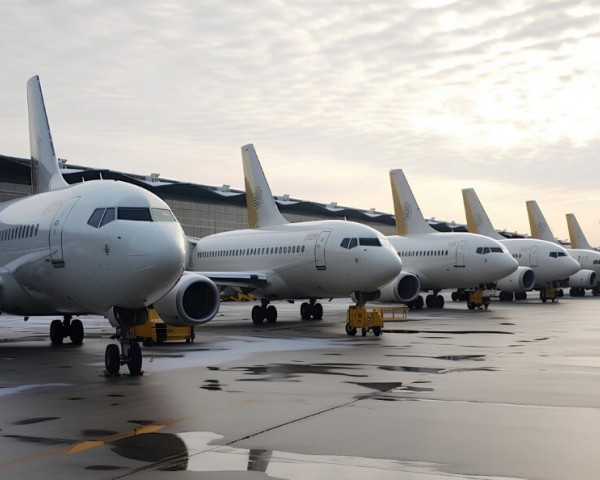The European aviation sector has bounced back remarkably, exceeding pre-COVID-19 levels for the first time since the 2020 lockdowns disrupted air travel. A recent Eurocontrol report indicated that the skies over Europe witnessed an average of almost 33,000 flights each day last week, a 2% increase compared to 2019.
The surge in air traffic, when considered alongside rising jet fuel demand, signals a considerable rebound for the aviation industry, despite ongoing global economic uncertainties stemming from U.S. tariffs and the ever-changing landscape of oil markets.
A Milestone in Air Travel Recovery
The spring of 2025 indeed represents a turning point for the European aviation sector, generally speaking. Eurocontrol’s data highlights that air traffic has exceeded pre-COVID levels—a significant achievement considering the industry was brought to a near standstill in 2020. Government restrictions on flights during that period caused a dramatic drop in demand, resulting in plummeting air traffic and corresponding declines in fuel prices. But now, in 2025, the skies are seemingly busier, reflecting both traveler confidence and a resurgence in demand.
This surge in activity arrives amidst shifting global economic dynamics. The drop in oil prices, generally attributed to increased supplies from OPEC+ nations, has offered airlines some degree of relief. However, issues, like U.S. tariffs and overarching economic instability continue to create uncertainty for the aviation sector.
The Growing Appetite for Jet Fuel
In parallel with the rise in flights, Europe is also showing a strong appetite for jet fuel. Bloomberg suggests that jet fuel consumption may be reaching 1.8 million barrels each day this quarter, representing a 5% year-on-year increase. This surge provides a much-needed boost for refiners; currently, jet fuel prices command a premium of roughly $19 per barrel above crude oil. General Index data indicates that this surpasses the 10-year seasonal average.
Forecasts suggest that this upward trend is expected to continue into the coming quarter due to sustained travel demand across the continent. This presents a lucrative opportunity for refiners, as Europe’s aviation sector clearly regains its momentum.
Navigating the Complex Air Travel Global Landscape
Despite the positive signs in air traffic and jet fuel demand, the aviation industry still faces some challenges. The global economy remains volatile, with U.S. tariffs adding to trade and fuel market uncertainty. However, the drop in oil prices, a result of increased production from OPEC+ countries, has somewhat mitigated these pressures, resulting in a somewhat more favorable cost environment for airlines.
The combination of strong travel demand and advantageous fuel prices arguably positions the European aviation sector for continued growth. Airlines, refiners, and related industries are working to capitalize on this momentum while remaining agile as they navigate various geopolitical and economic challenges.
A Promising Future for the European Aviation Sector
The data clearly shows Europe’s skies are busier than ever; the aviation industry is definitely charting a strong recovery. With daily flights surpassing pre-COVID figures and jet fuel demand on the rise, the sector, in most cases, appears poised for further growth. As travelers return in significant numbers, Europe’s aviation industry isn’t just rebounding – it’s thriving. This signals a new era of connectivity and opportunity, despite the presence of a complex global landscape.

